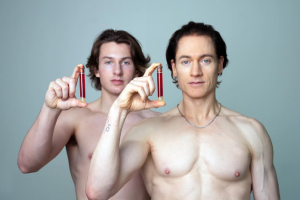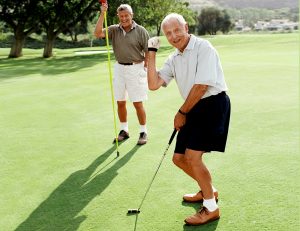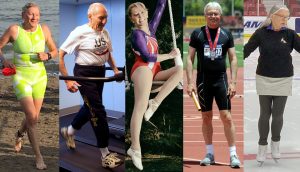6
Section One: The Fundamentals
A) Keywords
Exercise 1:
Provide a brief definition of one of the padlet keywords for this week.
| Equity is society’s ability to provide people with individualized tools and resources to have the same opportunities for participation, despite difference in skillsets, resources and abilities. This term is oppositional to equality, where people with different abilities are provided with the exact same resources as everyone else despite having an entirely different needs to accomplish the task at hand. For example, equality would be prescribing ADHD medications for everyone with a learning disability, whereas equity would be prescribing ADHD medications for those with ADHD, anti-anxiety medications for those with anxiety, and so on. The idea of equity stems from the understanding that everybody has different needs (and abilities), and the fundamental right for all individuals to participate in society should be backed by providing everybody resources to participate in an accommodated manner. |
B) The Social Significance of Aging in Sport
Exercise 2: Notebook Prompt
How is old age popularly represented today? Find an image online that you think exemplifies one defining attitude towards old age and paste in your notebook below with a brief explanation of what this image means to you.
| Today, old age is represented as an overtly negative phenomenon that must be slowed, ceased or even reversed. Western societal and neoliberalist views aging as a process of deterioration, illness, frailty and morbidity rather than that of opportunity, new growth, innovation and natural evolution. Aging has been so stigmatized and detested, it almost as though it has become unnatural and avoided completely. From visual reversal strategies such as plastic surgery and botox, to extremist measures such as youth blood-plasma transfusions (see article here) it seems as though people will try anything to stay young and healthy forever. Below is a photo of a father and son, side-by-side, holding a small tube of blood and plasma, which is taken from the son and injected into the father, despite FDA warnings about potential health risks. Visually depicted is a man and his youthful son who has successfully “cracked the aging code” with an unnaturally youthful complexion and physique, despite his “age”. This photo makes me think of the extreme lengths people will go to, in order to maintain a youthful look in a society that demands it. Especially with the infiltration of social media, filters and AI, this issue of body/aging dysmorphia is currently worse then ever before.
|
Exercise 3: Notebook Prompt
What does the article (referencing another study by Dionigi) mean by its statement that sport can help aging people to simultaneously “accept and resist the ageing process” (572)? Respond by audio or text and find paste two images sourced online into your notebook showing how sport might help aging people to both accept and resist the aging process.
| Accept: Sports help people accept the aging process by altering and evolving how sports are participated in by these groups, rather than neglecting physical activity overall. Life and aging is not a linear process — the demands of physical activity constantly vary throughout the lifespan due to barriers such as injury, illness, pregnancy, menstruation, and much more. Athletic involvement can even be influenced by the social determinants of health, such as finances, as an individual who is young may not have enough money for a gym membership, or time to participate in organized sport due to working multiple jobs. Does these factors make individuals any “lazier”, less motivated or less worthy of participating in sports? Absolutely not, and the same rule applies to aging. Just because someone has grown older and may not have the same athletic abilities as their 17-year old self, this doesn’t mean they should negate participating in sports overall. Conversely, sports offers a breadth of different participation opportunities, thus helping individuals accept the aging process whilst still enjoying athletic involvement. Golf is a wonderful example of a sport fit for older adults. The low-impact structure of the grass is good for frail joints, while the sport can be enjoyed by all ages and improves coordination, cardiovascular health, and encourages both socialization and time in the outdoors.
Resist: Sports help resist ageism and the aging process by improving overall health and fitness levels, thus defying the natural aging process from occurring so acutely. Individuals who don’t participate in fitness throughout the lifespan are often identified as having “given in” to the aging process, while people who continue to participate in high-endurance sports are a pinnacle of inspiration for all ages. While involvement in sports in later-life stages has been historically discouraged on the basis of frailty and weakness (Pike, 2015) altering sports to be age-friendly has more benefits compared to giving into a sedentary lifestyle simply because society deems this more appropriate than “pushing the limits” as a senior. Due to our increasingly aging population and large demographic of “boomers”, it is more important than ever to find ways to encourage older adults to participate in recreation to benefit health and wellness. Additionally, worldviews and cultural norms heavily influence elderly sports participation, and in many instances, increased involvement in seniors’ sports activities has an underlying agenda of “addressing” the aging “problem” and take on a perception of avoidance rather than encouragement (Pike, 2015). Below is a photo of seniors who are “resisting” their age, by participating in high-impact, classically youthful and strenuous sports.
|
Exercise 4: Notebook Prompt
Who are the groups less likely to have extensive opportunities to take part in sports, according to Pike? How does privilege factor into aging and sport? (200 words max)
| Privilege intersects with the experience of sport participation as a whole, including in the context of aging. Marginalized groups, racially diverse (BIPOC) populations, those with impairments, lower-class individuals, females, rural-living individuals, and institutionally confined seniors are much less likely to participate in sports throughout the aging process. Additionally, the lived experience of aging and recreational involvement among such groups is thoroughly under-researched and poorly understood. Because these unique experiences are poorly understood, taking an intersectional approach to exploring how marginalization compounds with aging and creates a lack of opportunity and encouragement in recreational advancement among these individuals.
Sport and aging interplay with marginalization because there are numerous factors that must be satisfied to participate in sports. These factors include finances, environment/geographical area, social supports, resource allocation, time constraints with competing factors (i.e working, parenting), and more. For example, a widowed black woman would have a much harder time participating in recreation than (for example) a 20-year-old white man. Because she is widowed and female, more responsibility for maintaining the house/property and domestic affairs will fall to her. Additionally, helping out with grandchildren may be a competing priority, as there are often racially-induced discriminatory factors that cause POC to be of a lower financial class, which could impact her daughter’s ability to pay for childcare. If she is living in a low-income area, there are likely few/no social supports or resources in place to encourage age-appropriate recreational involvement. |
Exercise 5: Padlet Discussion
Why do you think age discrimination is “reported more than any form of prejudice” with older people presented as a threat to social values and interests? Feel welcome to use video in your responses. Paste your comments (or transcript of your video) below!
| Age discrimination is the most reported form of prejudice for numerous reasons. For starters, age affects everybody because, unlike racism, sexism or classism, effects of aging is guaranteed for every individual who lives to be of an old age. Aging also exacerbates, as we’ve learned, many other factors and forms of discrimination such as sexism, though the intricacies of these experiences are poorly understood. Additionally, traditional beliefs that are held by older adults may be seen as a threat to “progress” or modern neoliberal “woke” mindsets that are a stark difference to what was taught/believed and understood by previous generations. Lastly, older adults by a landslide cost the most taxpayer dollars in hospitalizations, medical care, and more. Additionally, large proportions of money are required to create age-friendly spaces, such as park benches, wheelchair ramps, and other infrastructure-related accommodations. There is a certain kind of isolation that comes along with age, that I have discussed with my patients working in a hospital. It as though, as someone ages, they become so irrelevant in the ways of modern-day society that their presence as a whole fades with time. |
B) Older Women and Sport
Exercise 6: Notebook Prompt
What differences do you see in these ads? Which one is more inclusive? How is age represented or not represented in each? Answer these questions in your notebook.
| #1 Nike – You Can’t Stop Us | #2 This Girl Can – Me Again |
|
|
Overall, I believe the Nike ad (#1) is more representative of experiences of a broader group of marginalized individuals through their portrayal of sports at all levels, races, ability, genders, etc. However, the Nike ad puts very little emphasis on the diverse experience of aging individuals specifically, therefore I believe commercial #2 does a better job of contrasting experiences of sports participation in all walks of life, from adolescence and period pains to pregnancy and adulthood and beyond. In ad #1, age is hardly acknowledged and instead focuses on energetic young athletes, while ad #2 shows a candid expression of finding balance with femineity throughout the lifespan and its impact on sport participation. For example, how taking care of children and taking on a domestic labour role can sometimes inhibit or interfere with being athletic, yet these women seem to “overcome” such obstacles through sheer willpower and determination as represented in the advertisement.
Exercise 7: Notebook Prompt
In her article, “Assessing the sociology of sport: On age and ability,” Elizabeth Pike references a “trend towards a ‘feminisation of ageing’, with many women living longer than men” (573). Do you agree that aging has been “feminized” in this way? How? Answer these questions in your notebook.
| I disagree that aging has been “feminized”. Fragility and increased vulnerability is a phenomenon that is widely regarded as a multi-gender experience of aging, rather than a feminine-centered issue. Pike provides very little explanation of how or why she believes ageism has become feminized apart from the mentioning of women biologically living longer than men. However, this analysis doesn’t sufficiently satisfy the question of how the essence of aging has become female, as in a patriarchal society, I believe almost everything, including ageing, is analysed and has an overriding focus on the male experience as opposed to that of a female. Though women live longer and are still expected to maintain their domestic roles into an elderly age (ex, housekeeping, cooking, [grand]parenting), if men lived longer than women I am sure men would be forced to take part in these roles in the absence of their wife. Similarly, women oftentimes are forced to “pick up the slack” on participating in labour-intensive activities if their husband/male partner is unable to do so, even into old age. Regarding sports, I believe the main issue of lack of participation with senior females stems from the intersectional experience of sexism and ageism, rather than a direct dismissal from participation of older women specifically. |
Section Three: Module Mini Assignment
Using the Pike article in Section One as a reference, analyze popular depictions/discussions/critiques of pickleball as a “sport trend” that has proved enormously appealing to older segments of the population.
Worth: 5%
Due: April 15th along with module work
Extra Credit: The Great Peterborough Pickleball Debacle” Extra Credit Assignment (3 points possible)
1) In addition to answering the question above, research the Peterborough Pickleball debates of 2024 and outline the issues as you understand them. Read this article for background and source two other media /social media pieces. Is agism a factor here in these debates? Why or why not? (300 words)
| On a purely scientific basis, Pickleball is a popular choice for seniors due to its extremely low impact, and compounding benefits to cardiovascular health, coordination and balance, mental health through socialization and involvement and cognitive enhancement (Beck, n.d). On a larger basis, Pickleball is one of the few sports that encourages participation of senior citizens, alongside golf, potentially having a larger following among older adults than any other demographic. It is an activity that provides many health benefits, opportunities for involvement and socialization, and can be easily played throughout the lifespan.
In 2024, when the article by Anselmi (2024) was written, senior citizens aged 65+ made up 25% (1/4) of Peterborough’s total population (Canada, 2024). Therefore, it is unsurprising that the use of Bonnerworth Park’s limited green space is being dedicated to a sport that caters majorly to older adults. Anselmi (2024) makes no mention of the choice of Pickleball being reflective of the older-aged demographic of Peterborough, but I certainly believe this is a factor. Interestingly enough, despite beliefs that Pickleball is a “senior” sport, Global News shows a video of Peterborough residents resisting the upgrades to Bonnerworth park, most of which are senior citizens (see video here) (Davis & Lothian, 2024). I believe ageism interplays with the effects of Bonnerworth reconstruction because it is being built in an area with a large elderly population. City planners likely assumed these residents would enjoy the idea of Pickleball courts in their backyard due to the very problem that ageism causes — unfair assumptions that create decisions before people are consulted. David King’s article from the Arthur (Trent University) regarding the Bonnerworth park redevelopment states that a group living near the park feels as though this development is an attack on their demographic, of which remains unmentioned but could be racially or age-related (King, 2024). This is a direct mention of discrimination, but my analysis of reading the news is that elderly people also feel indirectly and subliminally targeted in ongoing assumptions that Pickleball is meant “for seniors”, whilst the budget for the Pickleball courts directly ignore of the homeless crisis also taking place in Peterborough (King, 2024).
Sources Anselmi, E. (2024, April 8). Plan to pave a Peterborough Park for pickleball faces pushback. The Narwhal. https://thenarwhal.ca/opinion-peterborough-pickleball-paves-park/ Beck, T. (n.d.). Pickleball: Fastest growing sport – especially for seniors. MUSC Health. https://muschealth.org/medical-services/geriatrics-and-aging/healthy-aging/pickleball#:~:text=Racket%20sports%20boost%20the%20cardiovascular,and%20muscles%2C%20as%20mentioned%20above. Davis, G., & Lothian, R. (2024, April 9). Pickleball courts to proceed as part of Bonnerworth Park redevelopment in Peterborough – peterborough. Global News. https://globalnews.ca/news/10411439/pickleball-courts-bonnerworth-park-redevelopment-peterborough/ Government of Canada. (2024b, October 24). Government of Canada. Canada. https://www.canada.ca/en/immigration-refugees-citizenship/campaigns/immigration-matters/local-economies/peterborough.html King, D. (2025, January 16). Enter the Bonnerwall: Mayor’s levee marred by death threats, Bonnerworth Protest. Enter the Bonnerwall: Mayor’s Levee Marred by Death Threats, Bonnerworth Protest. https://www.trentarthur.ca/news/enter-the-bonnerwall
|




